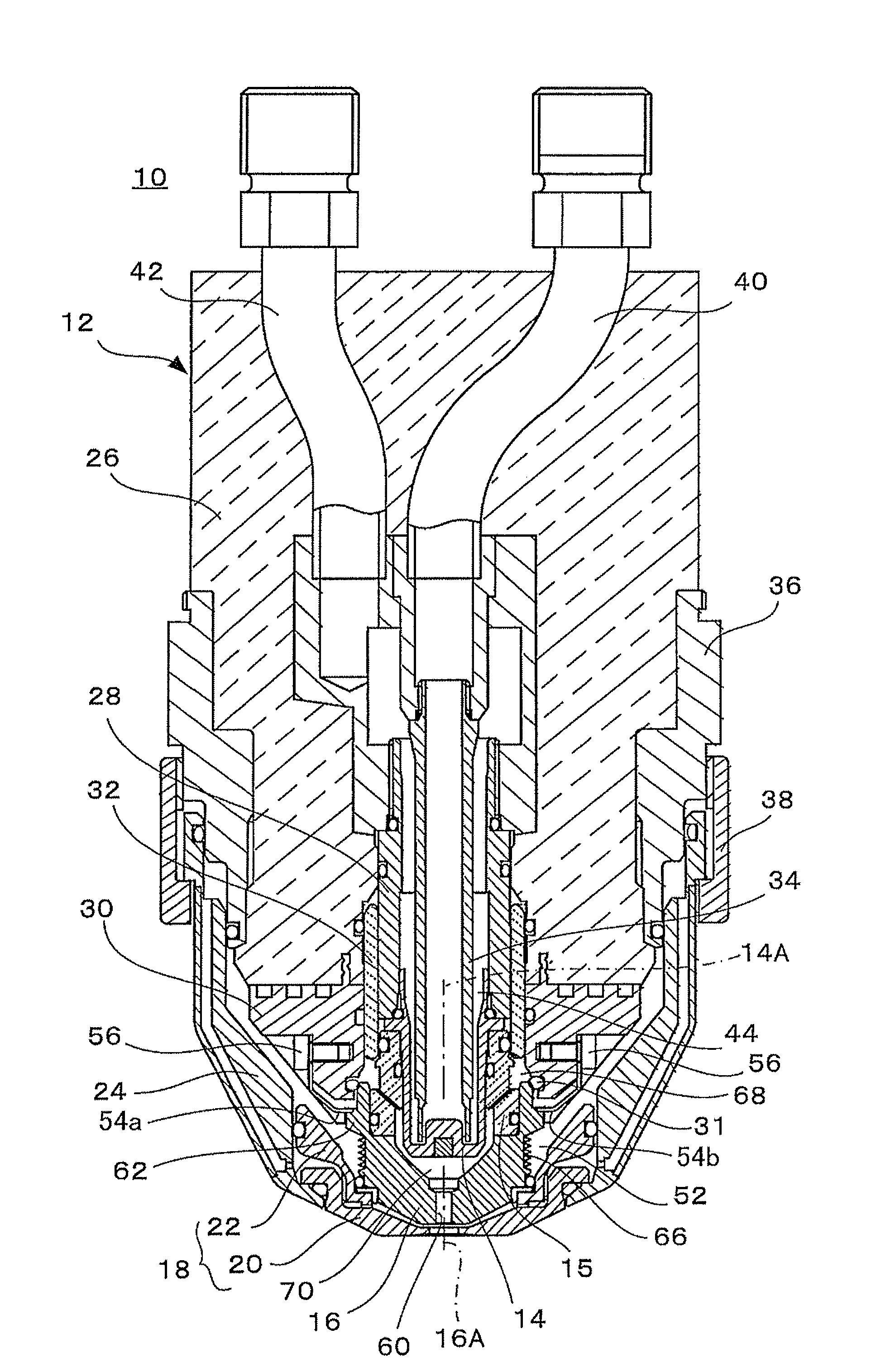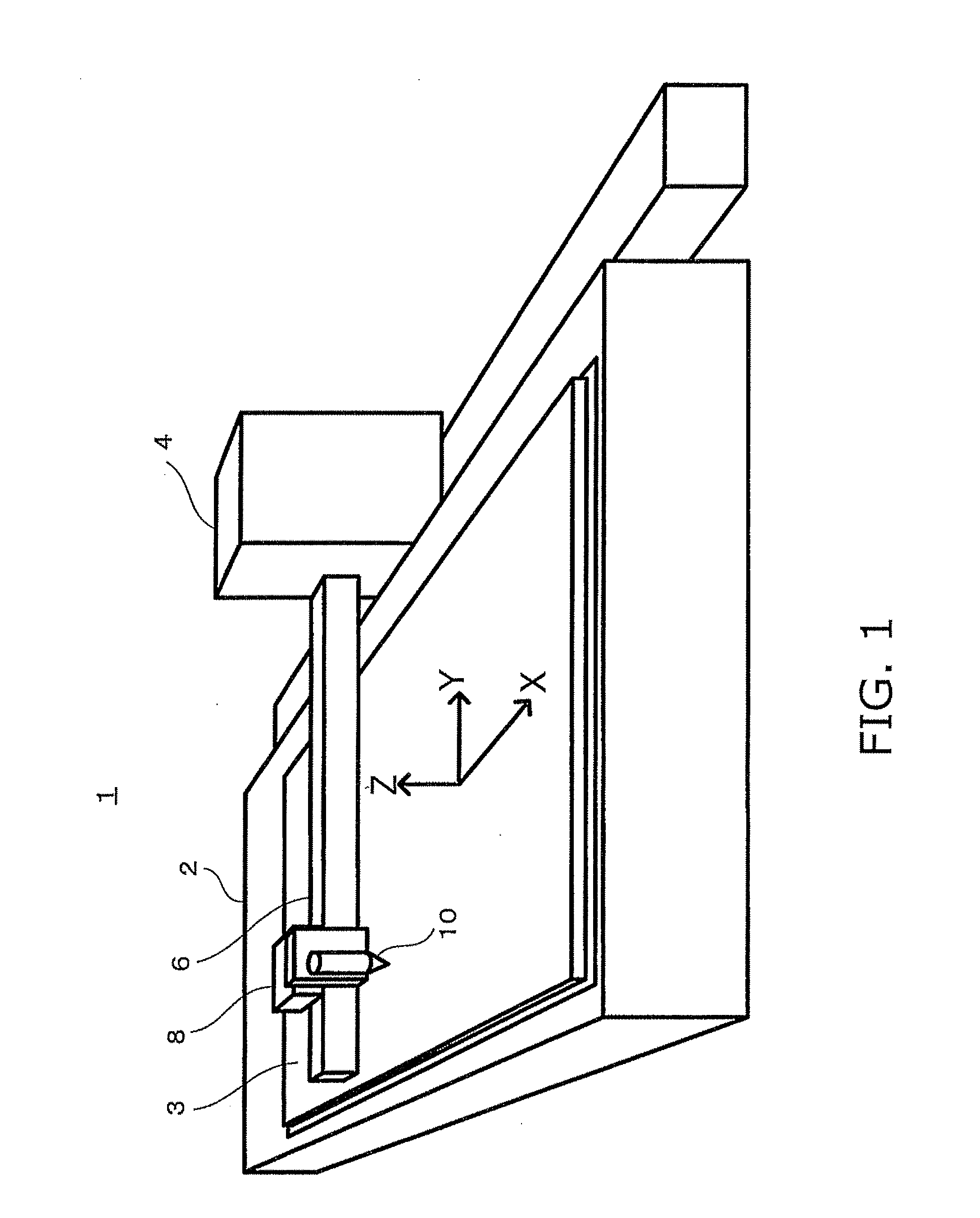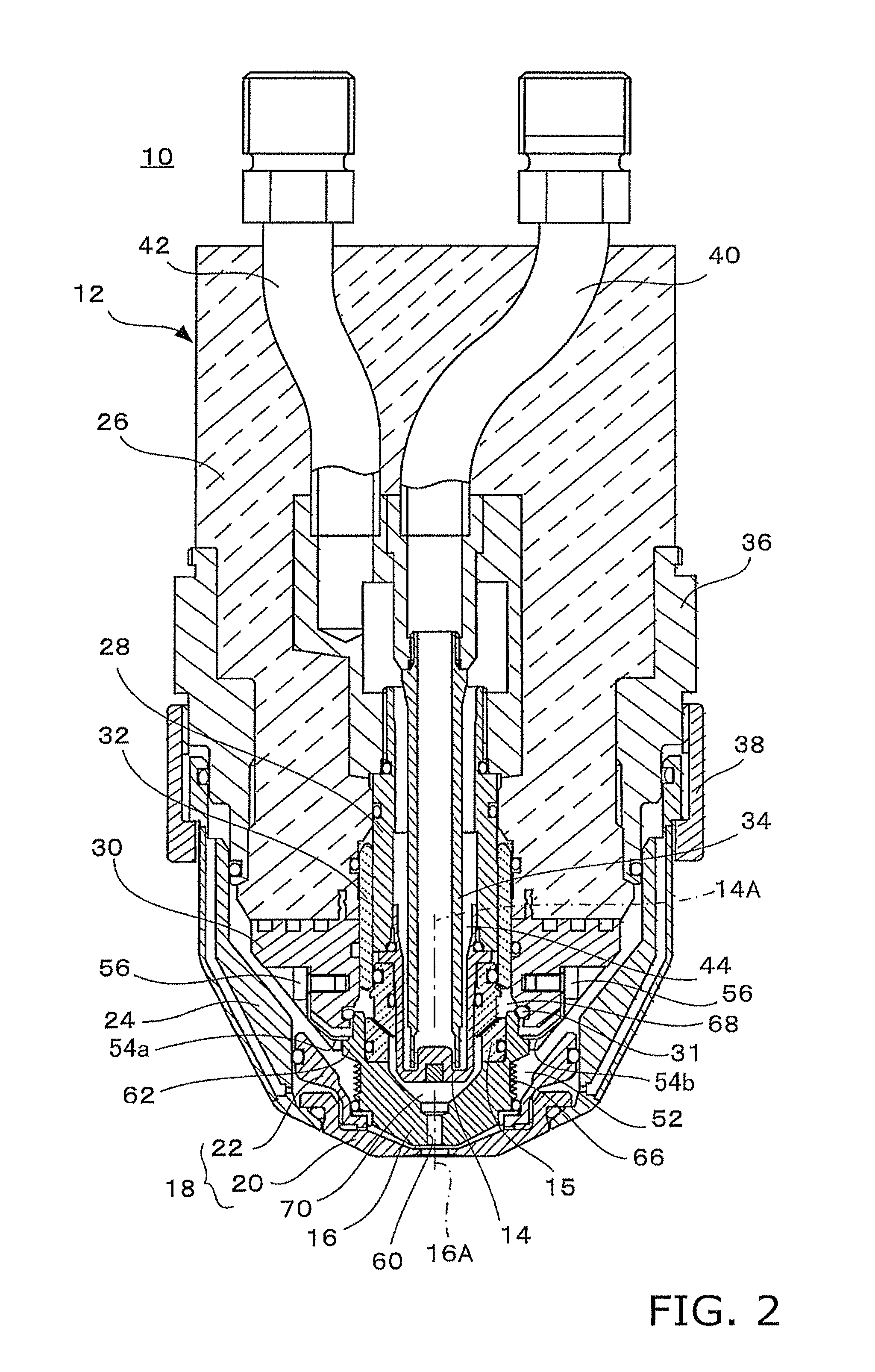Plasma torch, plasma torch nozzle, and plasma-working machine
a plasma torch and nozzle technology, applied in the field of plasma torch, can solve the problems of increasing the contact resistance between the nozzle and the nozzle seat, affecting the formation of reliable electroconductive paths, and melting of the contact surface between the two, so as to improve the surface area of the nozzle, improve the effect of nozzle nozzle nozzle, and facilitate removal
- Summary
- Abstract
- Description
- Claims
- Application Information
AI Technical Summary
Benefits of technology
Problems solved by technology
Method used
Image
Examples
Embodiment Construction
[0030]An embodiment of the present invention is described below with reference to the drawings.
[0031]FIG. 1 shows in a simplified manner the overall configuration of an embodiment of the plasma-working machine according to the present invention.
[0032]A plasma-working machine (e.g., a plasma cutter) 1 is provided with a table 2 on which a workpiece (typically, a steel plate) 3 is arranged; a plasma torch 10 for emitting a plasma arc and working (e.g., cutting) a workpiece 3; torch movement devices 4, 6, 8 for moving the plasma torch 10 in the X (lengthwise), Y (transverse), and Z (height) directions with respect to the workpiece 3; and other components, as shown in FIG. 1. The torch movement devices 4, 6, 8 are composed of, e.g., a movement truck 4 that can move in a reciprocating fashion in the X direction adjacent to the table 2; an arm 6 extending above the table 2 from the movement truck 4 in the Y direction; a carriage 8 that movably supports the plasma torch 10 in a reciprocati...
PUM
| Property | Measurement | Unit |
|---|---|---|
| electroconductive | aaaaa | aaaaa |
| outer diameter | aaaaa | aaaaa |
| structure | aaaaa | aaaaa |
Abstract
Description
Claims
Application Information
 Login to View More
Login to View More - R&D
- Intellectual Property
- Life Sciences
- Materials
- Tech Scout
- Unparalleled Data Quality
- Higher Quality Content
- 60% Fewer Hallucinations
Browse by: Latest US Patents, China's latest patents, Technical Efficacy Thesaurus, Application Domain, Technology Topic, Popular Technical Reports.
© 2025 PatSnap. All rights reserved.Legal|Privacy policy|Modern Slavery Act Transparency Statement|Sitemap|About US| Contact US: help@patsnap.com



